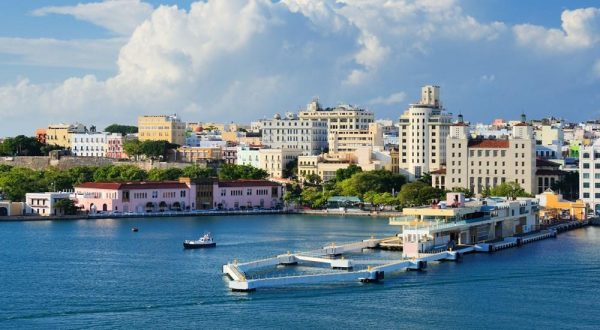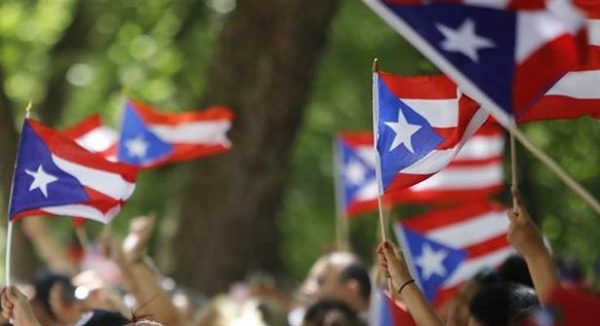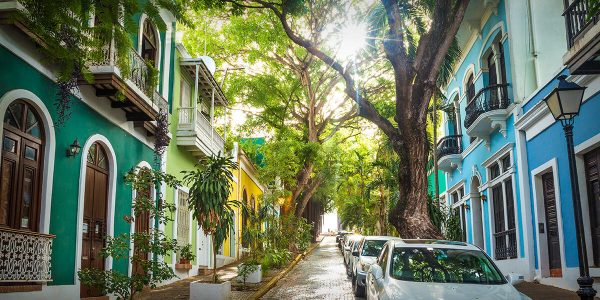Hurricane Maria: Puerto Rico Then & Now
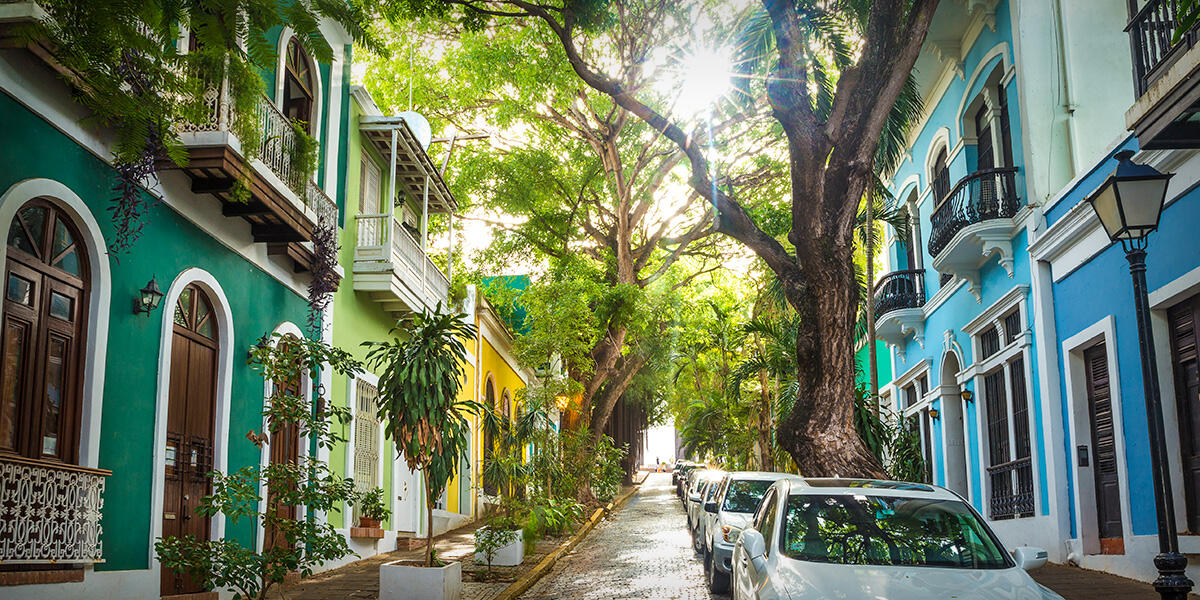
Puerto Rico is an archipelago located between the Atlantic Ocean and the Caribbean Sea, roughly 1,100 miles east-southeast of Miami, Florida. It consists of a main island, two populated islands off its east coast, Culebra and Vieques, and many smaller, uninhabited islands. Much of the main island’s interior is mountainous, with steep slopes and small valleys. Puerto Rico’s largest cities, including the capital of San Juan, are located along the coastlines, which are filled with attractive beaches and tourism attractions.
Prior to Maria, Puerto Rico has been hit by a series of environmental, social, and economic disasters. While Hurricane Maria’s damage in 2017 earned national and worldwide attention, Puerto Rico has a history of being vulnerable to a variety of environmental hazards and threats, including tsunamis, floods, tropical storms, coral reef deterioration, severe draught, and coastline erosion.
Aside from these dangers and threats, Puerto Rico’s financial crisis, which began in the early 2000s, has harmed the island’s ability to maintain essential electricity, healthcare, transportation, and communications infrastructure.
The Unwelcomed Guests
Puerto Rico was hit by two major hurricanes in rapid succession in September 2017. It all started with Hurricane Irma, a category 5 hurricane that came near to Puerto Rico’s main island on September 7, 2017, causing extensive power disruptions and water supply delays for many days. The strong rainfall and powerful winds of Hurricane Irma deteriorated Puerto Rico’s already-fragile physical infrastructure and ecosystems.
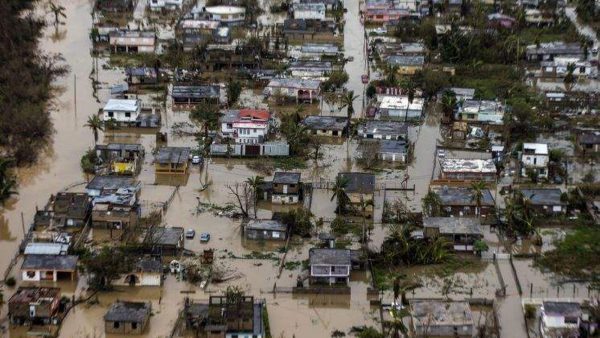
Less than two weeks later, on September 20, Hurricane Maria made direct landfall in Puerto Rico as a category 4 storm with peak wind speeds of up to 155 miles per hour, making it the most powerful hurricane to hit the island since 1928. Maria, coming so soon after Irma, was a near-worst-case situation for Puerto Rico.
The storm’s route travelled right over the main island, with the eye passing within 25 miles from San Juan, the capital. The combination of hurricane-force winds and Puerto Rico’s rugged geography resulted in wind tunnels, heavy rainfall, and flash floods.
The Aftermath
Thousands of households were affected and several localities were completely devastated. The Puerto Rican government revised the official death toll to an estimated 2,975 people in August 2018, which was 46 times higher than the original total of 64 deaths reported in December 2017.
Damage to essential infrastructure caused failures to lifeline services such as electricity, transportation, communications, water supply, and wastewater treatment, causing rescue operations to be delayed. Because these catastrophes occurred near the close of a particularly busy hurricane season, federal disaster response resources were limited, and assistance from neighboring states was impeded by a lack of mutual aid compacts and geographical distance.
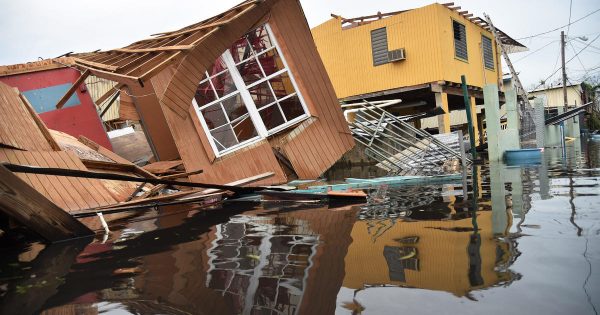
In the aftermath of the storms, some residents had been without electricity, fresh food, and clean water for a long time, and many had restricted access to medical treatment due to impassable roads. And the repercussions lingered for days, weeks, and months – government services and commercial sector were hampered, schools were closed, landslide zones faced flooding risks, and wastewater polluted marine habitats.
Recovery was difficult for older individuals, children, those with disabilities or chronic diseases, rural residents, and women. Local households experienced 84 days without electricity, 68 days without water, and 41 days without mobile service, according to the New England Journal of Medicine.
Puerto Rico Today
Today, life in the capital of San Juan and surrounding areas has returned to normal, though those venturing outside the metropolitan area will likely encounter a smattering of blue roofs, the occasional wayward light post, and debris that has yet to be collected. As the government prepares to privatize an old and poorly maintained grid destroyed by Hurricane Maria, there are still brief power outages and water shortages affecting few areas of the island.
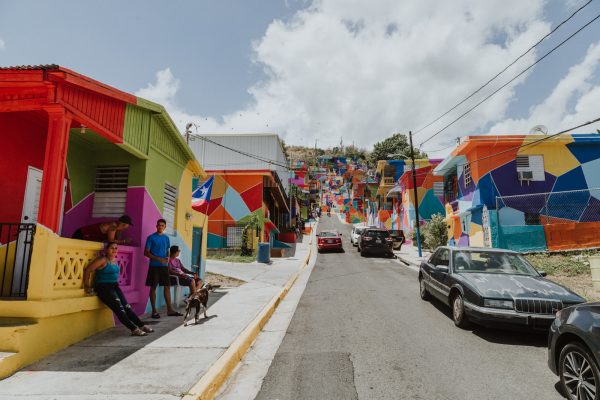
Despite all the crisis, Puerto Rico’s tourism industry which accounts for 6.5% of its GDP has bounced back surprisingly quickly. 2019 was a record-breaking year for tourism, with 5.2 million visitor arrivals and nearly $1 billion spent on hotels and vacation rentals, according to the tourism board, Discover Puerto Rico. As tourism plays a vital role in the economy of Puerto Rico, other sectors of economies have also bounced back from this tragedy.
Thanks to the funding from the government, there has been so many incentives and plans introduced to help Puerto Ricans get a fresh start. The 5th Floor is honored to be a part of the island’s development and innovation. Regardless of the storms and rainbows, The 5th Floor is here to serve you with reliable electricity, high-speed Internet access, clean water, and so much more! Visit our space to see everything we have to offer, or simply go over our website for more information.

